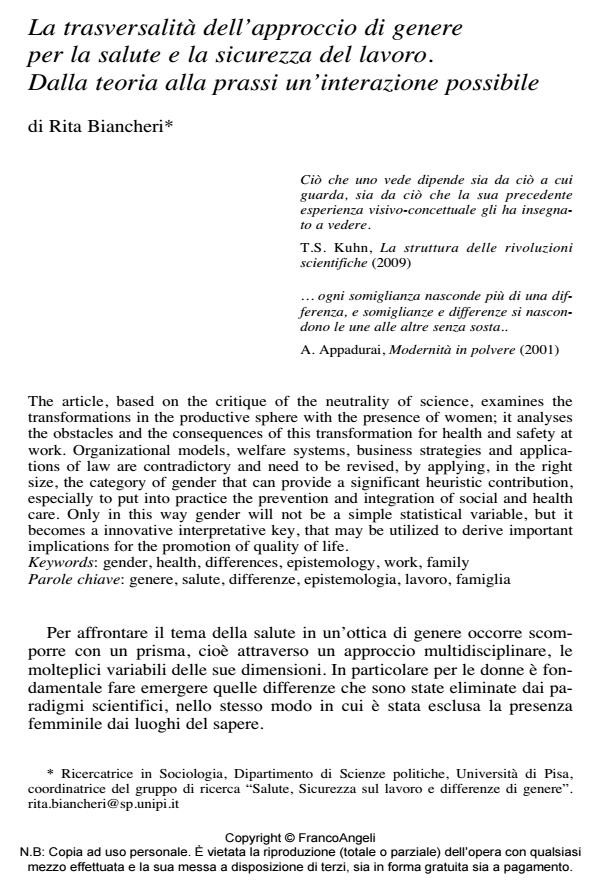La trasversalità dell’approccio di genere per la salute e la sicurezza del lavoro. Dalla teoria alla prassi un’interazione possibile
Titolo Rivista SALUTE E SOCIETÀ
Autori/Curatori Rita Biancheri
Anno di pubblicazione 2014 Fascicolo 2014/1
Lingua Italiano Numero pagine 15 P. 127-141 Dimensione file 531 KB
DOI 10.3280/SES2014-001011
Il DOI è il codice a barre della proprietà intellettuale: per saperne di più
clicca qui
Qui sotto puoi vedere in anteprima la prima pagina di questo articolo.
Se questo articolo ti interessa, lo puoi acquistare (e scaricare in formato pdf) seguendo le facili indicazioni per acquistare il download credit. Acquista Download Credits per scaricare questo Articolo in formato PDF

FrancoAngeli è membro della Publishers International Linking Association, Inc (PILA)associazione indipendente e non profit per facilitare (attraverso i servizi tecnologici implementati da CrossRef.org) l’accesso degli studiosi ai contenuti digitali nelle pubblicazioni professionali e scientifiche
With the Occupational Health and Safety Act (Legislative Decree 81/2008) Italy recognizes the gender as a relevant difference to ensure the equal protection for men and women at work. In the four years of the operation of this decree, we can detect a self-evident difficulty to translate this instruction into practice. Due to this delay, the Regional Directorate INAIL of Tuscany, to prevent that this part of the rule, related with the gender prevision, remain a dead letter, has promoted a research path on this subject. Within this framework, the paper aims, through the comparison with the literature and a coherent definition of the key concepts of the Legislative Decree, to provide a useful recommendation for a research design that should be both, theoretically aware and empirically oriented, in view of the translation of the Occupational Health and Safety Act into consistent guidelines.
Parole chiave:Genere, salute, valutazione dei rischi, tutela della salute sul lavoro, differenze, disuguaglianze
- Health and Sustainability: New Gender Perspectives Francesca Donofrio, Antonio Fusco, Angelamaria De Feo, in WSEAS TRANSACTIONS ON BUSINESS AND ECONOMICS /2021 pp.894
DOI: 10.37394/23207.2021.18.85
Rita Biancheri, La trasversalità dell’approccio di genere per la salute e la sicurezza del lavoro. Dalla teoria alla prassi un’interazione possibile in "SALUTE E SOCIETÀ" 1/2014, pp 127-141, DOI: 10.3280/SES2014-001011